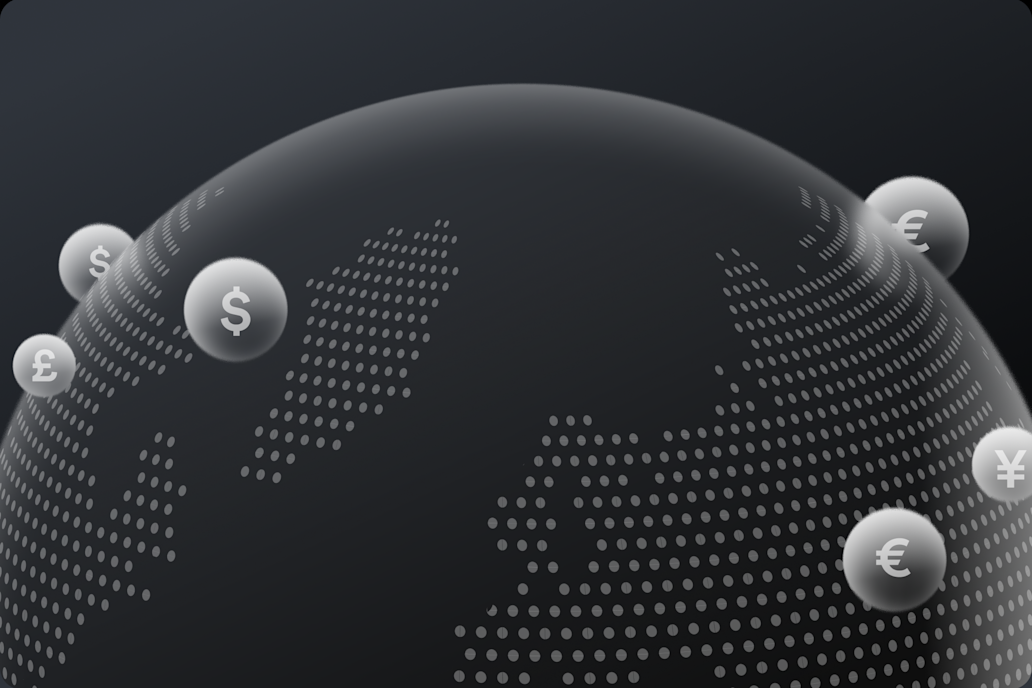The foreign exchange (forex or FX) market is a vast and nebulous one. In fact, it’s the largest market in the world, referring to the conversion of one foreign currency to another at an agreed price. Typically, currencies are traded in pairs denoted by their country codes - such as SGD to USD - reflecting the base currency and quote currency.
Within Asia Pacific and globally, Singapore is the largest and third largest FX centre respectively, and many enterprises rely on FX trading to make international transfers and cross-border payments. As a growing business, you’ll likely be dealing with international suppliers and clients even if your primary operations may be based in Singapore. This means each time you need to make foreign currency exchanges, naturally you’ll always want to make sure you’re getting the best FX rate to minimise your expenses.
But when you start to do your research to find the best money transfer provider for businesses in Singapore, things can get confusing. Bank to bank, supplier to supplier, the exchange rate can differ wildly. Then, when you do a quick Google search, the FX rate changes yet again.
Understanding what the interbank exchange rate is, and how this impacts your FX rate, ensures you’re prepared when it comes to foreign currency exchange. It enables you to be aware, alert and armed with the knowledge to get the best and lowest forex rate available.
Say goodbye to costly SWIFT fees and pay like a local in 120+ countries.
What is the interbank exchange rate?
In its simplest form, the interbank exchange rate is exactly what it says it is: it’s the exchange rate that banks use when trading foreign currency between each other.
It’s determined by banks accessing and analysing live currency exchange rates. They then take a mid-point between the buy and sell rates of each currency and use this as their exchange rate.
You might also see it referenced as the ‘real’ exchange rate, the mid-market rate, or the spot rate.
The spanner in the works is that there’s no single, agreed-upon interbank exchange rate. The rate changes depending on the bank, the currency, the market – even the time of day.
When you do a Google search to find the foreign exchange rate for a particular currency or check exchange calculation services, this is typically the rate you will see.
It sounds simple, doesn’t it?
How is the interbank exchange rate calculated and can my business access it?
If only it was as simple as that, though.
As a business, you typically won’t receive the interbank exchange rate when exchanging currency. You will usually get a blended rate, taken as a mix of live foreign currency exchange rates, market data sources, and the differences between local and international banks.
Banks will usually mark up the interbank rate by anywhere from 4% to 6%. It doesn’t sound like much, but these small percentages add up, particularly when you’re dealing with large amounts of money.
After all, foreign transfer providers and banks are businesses too, so they will add a little increase on the exchange rate as a way to pay staff, to pay for the time taken to make the currency exchange, and as a way to boost their profits.
The difference between bid and ask prices
When looking at foreign currency exchange you’ll come across the terms bid price and ask price.
These are simply different ways of saying the buy and sell prices. Banks sell currency for the ask price, and they buy currency at the bid price.
These prices will usually differ. This can be affected by anything from the current political climate, world news, inflation,and interest to simple supply and demand.
The difference between these two prices is known as the bid-ask spread and is something you need to know about when exchanging foreign currency, as this determines where you’re getting the best deal on currency exchange.
Currencies in reasonably developed nations typically have a low spread. In emerging markets, the bid-ask spread can be much larger, and change greatly throughout the day.
Hidden fees that increase the exchange rate
Brokers are known to charge a markup on the bid-ask spread, where they buy your currency and sell it for a marked-up price. Brokers charge this markup as a way to make money off your foreign currency exchange.
Again, it’s usually only a small percentage; you may not even notice when you see it written on paper.
But when exchanging large volumes of currency regularly, these small percentages add up and affect your bottom line.
Say you’re exchanging $100,000. A 1% markup makes the difference of $1,000. If you do this multiple times a year, or a month – or even week – that’s a lot of money you’re actively losing.
That’s why it’s so important to get the best exchange rate and ensure the lowest cost international money transfer.
Airwallex gets you the best exchange rate possible
Airwallex takes the headache out of navigating foreign currency exchange. We enable businesses to get the closest possible rate to the interbank exchange rate.
When you exchange foreign currency with us, you can access our interbank FX rate, with a very small and transparent margin on top. This margin is the same regardless of the amount you’re exchanging, so you never have to go through the trouble of negotiating a better rate.
With access to over 30 currencies in over 130 countries, Airwallex enables you to get a better rate for all the biggest foreign currencies and allows you to keep more of your money in your pocket.
Take control of your global finances.
Frequently asked questions (FAQs)
What are interbank FX rates?
The interbank exchange rate, also known as the mid-market rate, is the wholesale rate that banks use to trade currencies among themselves – typically the mid-point between buy and sell prices. However, in practice, businesses are often charged the interbank rate plus a margin to cover execution costs and service.
This publication does not constitute legal, tax, or professional advice from Airwallex, nor does it substitute seeking such advice, and makes no express or implied representations / warranties / guarantees regarding content accuracy, completeness, or currency. If you would like to request an update, feel free to contact us at [[email protected]]. Airwallex (Singapore) Pte. Ltd. (201626561Z) is licensed as a Major Payment Institution and regulated by the Monetary Authority of Singapore.
View this article in another region:United KingdomUnited StatesGlobal

Shermaine Tan
Manager, Growth Marketing
Shermaine spearheads the development and execution of content strategy for businesses in Singapore and the SEA region at Airwallex. Leveraging her extensive experience in eCommerce, digital payment solutions, business banking, and the cross-border industry, she provides invaluable insights that guide businesses through the complexities of global commerce. Specialising in crafting relevant and engaging content that resonates with business owners, her work is designed to drive growth and innovation within the fintech and business economy space.
Posted in:
Transfers


